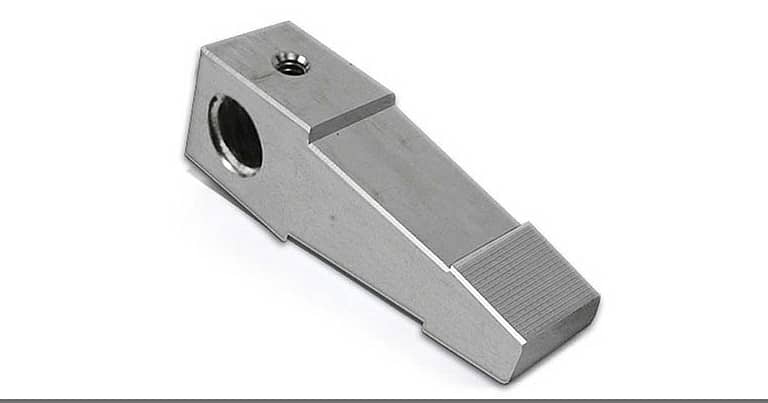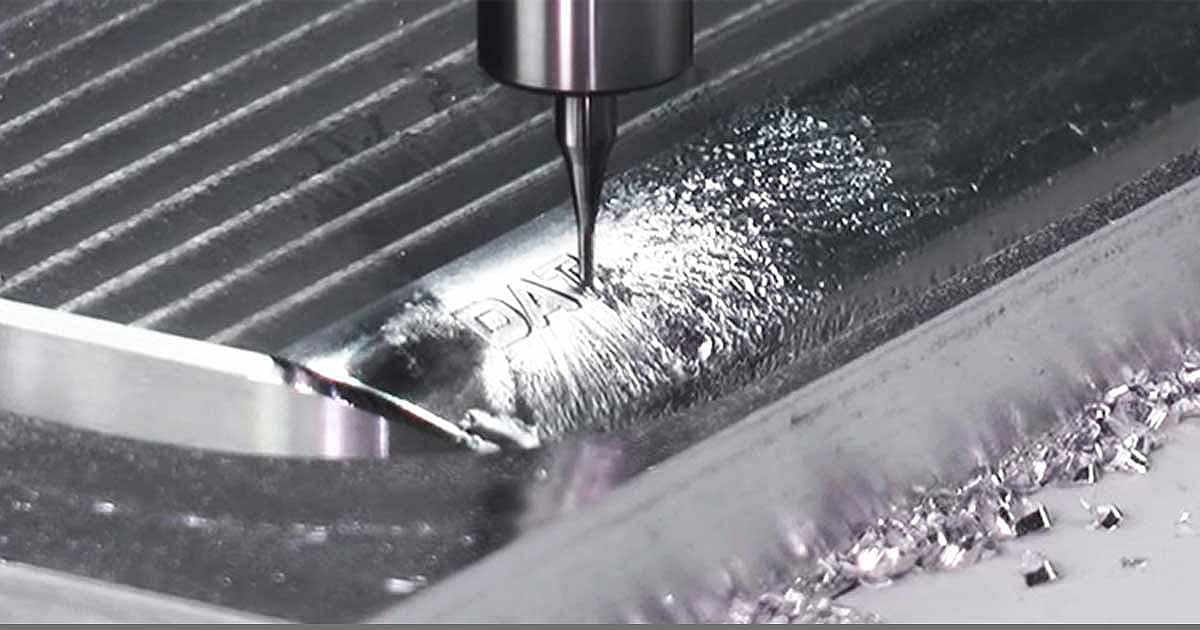
Without rapid prototyping, which allows CNC machinists and engineers to transform a scale model into physical, tangible product, Microsoft might not be so excited—or quick—to show off its latest gaming console. “Billed as the most powerful games console ever, it’s set to offer native 4K gaming in the living room,” according to All3DP.
Arguably, the road to success might have been longer without the amazing innovation of rapid prototyping.
Why is rapid prototyping so critical to brands like Microsoft—and countless other, smaller manufacturers? What does rapid prototyping mean for machinists and engineers?
If you ask Tom Chi, the sky is really the limit as rapid prototyping offers fast solutions for a brighter future. The implications for rapid prototyping are potentially just as game-changing (get it?) for entrepreneurs as they are for major corporations like Microsoft, with respect to seriously saving both time and money.
So, what is rapid prototyping? Why is there such a push to increasingly integrate it into machining and engineering?
Understanding this process is critical to expanding the possibilities of turning our designs into products faster than ever before. Check out the following and envision how rapid prototyping could help transform your business and possibly boost your bottom line.
What is Rapid Prototyping?
At the risk of oversimplifying a complex process, rapid prototyping is defined as “the speedy creation of a full-scale model. The word prototype comes from the Latin words proto (original) and typus (model).”
By creation, we don’t mean the creation in the abstract. Rather, a rapid prototype represents a tangible, hold-in-your-hands, physical creation.
There are different types of rapid prototyping, with the current trends following additive manufacturing and 3D printing. However, subtractive rapid prototyping still continues to be a major driver and is often better suited for certain types of projects and product designs.
No matter whether you’re doing additive, subtractive or some combination of both, the fact is rapid prototyping allows designers to bring their models to life. “This is often done using sophisticated computer-aided design or other assembly software, and physically implemented using 3-D printers,” as defined by Techopedia.
Rather than rely on a 2D drawing, rapid prototyping creates a 3D model that can be held and examined for more precise design and production. The benefit here is two-fold: rapid prototyping saves time—and money.
The team at UK-based 3D Creation Lab explains, “3D Rapid prototyping advancements allow for faster and lower cost prototypes and model fabrication by eliminating manpower and expensive tooling which allow companies and inventors to bring their products and designs to market faster than the competition.”
Given all the product possibility that rapid prototyping has to offer, one has to assume there is a drawback somewhere.
How can anything this innovative not come with a pitfall or two?
Turns out, it can’t.
For all the pros, rapid prototyping does present a few cons, not the least of which is the potential to eliminate manpower, thereby reducing the number of jobs available for CNC machinists.
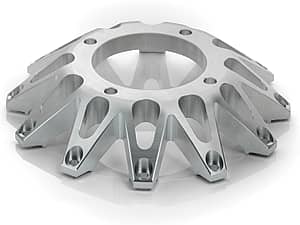
However, in The Future of Rapid Prototyping, Soren Petersen Design Research Ph.D. and author of Profit from Design predicts the following:
Designers may worry that rapid prototyping will cut into their business, similar to what desktop publishing and music and video sharing have done to the graphic and entertainment industry. However, the result may just be that the bar is raised for what constitutes good product design, which would benefit everyone.
The benefits are numerous and continue to raise the bar across industries. But, for the sake of balance, we’ll weigh both sides of the coin.
Pros and Cons
We’ve covered the pros of rapid prototyping, but just to recap, they come down to speed and cost. APT Mold argues there is also an inherent customer service and client satisfaction reality to rapid prototyping:
Depending on your business model, with rapid prototyping, you can send a physical model for the client and management’s approval. These prototypes can help them determine its viability, effectiveness, and reception of the market before an order for full-scale manufacturing is made. The feedback from multiple sources can help improve the final design to gain the upper hand in the market.
Taking the edge on the market… what business doesn’t want that?
That edge comes with a price, of course, and that price represents the cons of rapid prototyping. All told, there are three primary drawbacks to rapid prototyping.
Tunnel Vision
Unfortunately, it’s easy to get tunnel vision and lose sight of the entire project when focused on a single prototype. The pitfall here is the potential for product developers to miss a solution that could prove better in the long run by focusing too intently on the prototype at hand (literally).
Case of Mistaken Identity
Prototypes, in the wrong client’s hands could be mistaken as the finished product and unfairly or hastily judged as such. The flip side of this occurs when a prototype is preferred over a final product. Neither case is helpful to the engineers and machinists behind this prototypes.
Variety is the Spice of Life
Rapid prototyping, however, restricts the number of options you have and might be best reserved for more straightforward projects.
However, as the following five brands show, despite these potential pitfalls rapid prototyping remains an effective means to a very lucrative end.
Five Brands Representing Rapid Prototyping Prowess
While these five companies are certainly not the only ones making rapid prototyping work for them, each one is illustrative of what this process can do for a brand’s products… and bottom-line.
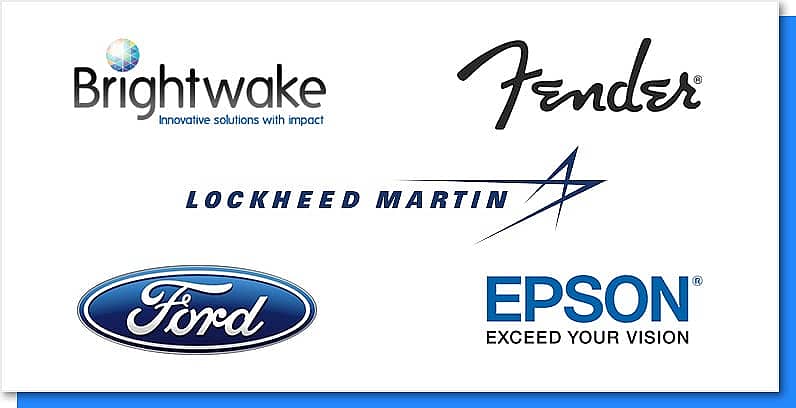
Brightwake
Certainly not a household name, nevertheless Brightwake is a research and design firm that is saving lives by saving blood. Or, more accurately, recycling blood that would otherwise be lost.
Hemosep is the company’s hallmark machine, able to recycle blood lost during surgery. In order to create Hemosep, Brightwake relied on 3D printing as its rapid prototyping process. Doing so reportedly reduced the production process by 96%. It’s safe to assume the financial savings were similarly considerable.
Fender
Music lovers will instantly recognize the Fender brand as the instrument manufacturer preferred by both amateur musicians and rock legends like Jimi Hendrix alike.
In order to speed up the already speedy rapid prototyping process, Fender purchased Stratasys industrial 3D printers and now creates their very own prototypes, right down to knobs on amplifiers. The lead time to create these prototypes has dropped from approximately two weeks to overnight. It’s safe to assume a shorter lead time equals longer profit margins.
Ford
Even big name automotive manufacturers like Ford have to be careful when it comes to budgeting. Rapid prototyping has taken “Ford tough” and made the brand even tougher by saving the company millions of dollars on both plastic and metal prototypes.
3D printing has proven a real time-saver, too, as the process creates prototypes in a matter of hours, making it possible for Ford engineers to decide whether or not actual production will prove advantageous.
These are just a few companies that use rapid prototyping in their product design. Others include major brands like BMW, Lamborghini, Valero, and Volkswagen.
Lockheed Martin
High-speed CNC prototyping is critical to product development at Lockheed Martin, the global corporate giant committed to advanced technologies in pursuit of aerospace, defense, and security initiatives, which asserts: “We are pushing the limits of additive technology and bringing design engineers to the factory floor to produce parts, layer by layer, that previously could not be built.”
Epson
Leveraging rapid CNC machining allowed Japan’s Seiko Epson Corporation to meet consumer demand for lighter, more comfortable augmented reality (AR) Moverio smart glasses.
“With the predecessor, we had many requests from users regarding the weight and size, so we set our development goals on improving comfort and making the smart glasses more compact and lightweight,” which is where high-speed CNC prototyping came in, according to Kazuya Kamakura, Senior Staff, HMD Business Management Department, Visual Products Operations Division at Epson.
These brands exemplify the possibilities provided by advanced manufacturing, but when it comes to rapid prototyping, which is better: subtractive vs. additive?
A Salute to Subtractive Rapid Prototyping
Here at Datron, we celebrate subtractive rapid prototyping for its reliance on effective machining processes. Unlike other rapid prototyping options, subtractive rapid prototyping results in end-use material prototypes featuring higher structural integrity.
The subtractive rapid prototyping milling process removes smaller pieces of material from a larger one, leaving a solid or intact piece. Additive rapid prototyping, on the other hand, creates layers of materials, with the end result not as structurally sound.
Why does this matter?
When creating end-use material prototypes you want the highest structural integrity possible, especially if the prototype will be integrated into product testing of any kind.
Moreover, milling provides a wider range of surface finishes compared to the “stepped finish” associated with additive rapid prototyping. Using a high speed CNC (Computer Numerical Control) milling machine results in prototypes with repeatability that has proven ideal for end-use materials.
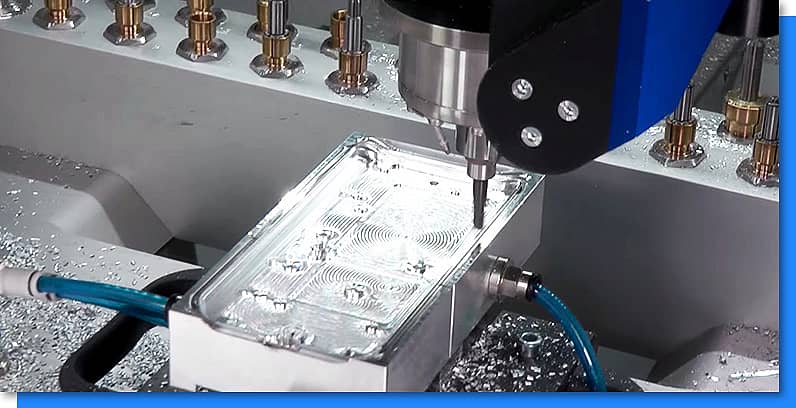
“One of the principal advantages to subtractive manufacturing is the ability to machine an extremely thin piece of plastic into a living hinge. This kind of process is simply not yet possible in a 3D printer,” according to Creative Mechanisms. “Advanced CNC machines utilize multiple tools and cut around at least three (x, y, and z) axes such that they minimize the requirement for designers to flip the block.”
Ultimately, “It is an appropriate choice for parts used for small and large volume production runs, to obtain specific finishes, or to obtain specific mechanical properties.”
Of course, we couldn’t support subtractive rapid prototyping projects without the right equipment.
What to Expect from High-Speed CNC Machining
High-speed CNC machines are the ideal alternative for engineers when 3D printers fall short and they typically fall short because of the material used for a particular prototype. Currently, engineers cannot 3D print metals like aluminum.
Other benefits of high speed CNC machining include the ability to produce smaller parts—like machining electronic enclosures, using cutting tools with maximum diameters of 0.50” based on increased demand. These machines are now equipped with 60,000 RPM spindles, accommodating higher feeds and rapid cutting without compromising critical components. Paired with optimized tooling, these machines enhance chip evacuation for reduced heat and cleaner cuts.
Operationally, perhaps the best part oh high-speed CNC machines is the user-friendly touch screen, which allows anyone capable of using a mobile phone to operate the machine.
Exploring Current CNC Machine Choices
Historically, CNC machines needed to be retrofitted to existing tools; however, as technology evolved, new machines were designed exclusively for CNC purposes. Examples of retrofitted machines include lathes and milling machines. In both cases, the machine’s built-in mechanisms are replaced with high accuracy components and new mounts for the actuators.
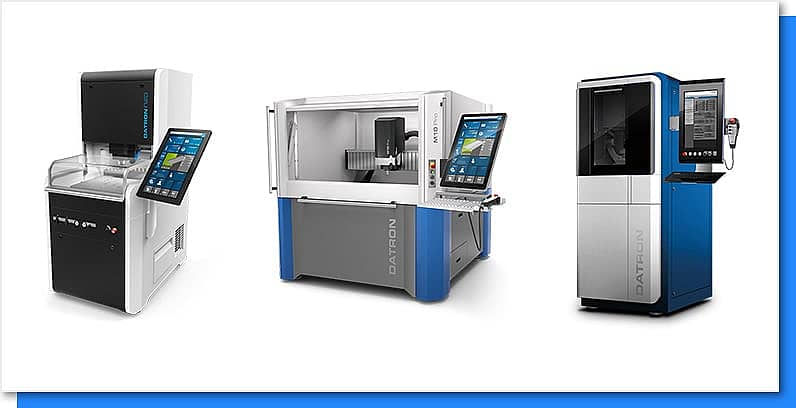
New CNC machines include 3D printers, CNC laser cutters, CNC plasma cutters, milling machines, pick and place machines, as well as routers.
3D Printer
Similar in design to a laser cutter or CNC router, 3D printers require a plastic extruder, which pushes hot plastic through a small hole, layering the material until the prototype is built.
CNC Laser Cutter
Ideal for cutting metal, plastic, and wood, CNC laser cutters use lasers specific to the required material.
CNC Plasma Cutter
Plasma cutters feature a plasma torch that is perfect for cutting 2-dimensional shapes into sheet metal.
CNC Milling Machine
Once only available in an enormous in size, milling machines built specifically for CNC purposes today are smaller in footprint and can include auto-feed mechanism, built-in tool changers, and electrical sensors to ensure careful monitoring for safe cutting.
Pick and Place Machine
Equipped with many small nozzles, pick and place machines move electrical components rapidly, placing them into circuit boards required for personal devices like phones and tablets.
Router
Built for bigger jobs, routers work with materials like plastics, sheet metal, and wood using a 3-axis set up, which makes cutting profiles and 3D relief machining easy. For more complex shapes, 4, 5 or 6-axis machines are the way to go.
Rapid Prototyping Elevates Engineers and CNC Machinists
As an engineer or CNC machinist, what does rapid prototyping in general mean for you, long-term?
For starters, you’re on the right path.
As the CNC manufacturing industry evolves, unveiling innovations like 3D printing, rapid prototyping and small-batch manufacturing continues to grow… rapidly.
Currently, “the global prototype manufacturing industry is valued at around $12 billion but is experiencing rapid growth at over 22.6% percent annually from 2010 to 2015,” according to Robotics Business Review, with prototype manufacturing “expected to reach $20 billion in valuation by 2020. Forecasts for the next 15 to 20 years predict growth up to the $40 billion mark, as continued technological innovation fuels the industry — and the markets that rely on it.”
Jobs projection is excellent; “The various CNC services are in such high demand that people trained in the area of precision machining rank among the top five most needed employees in the United States.”
In other words, onwards and upwards!
Industries to Watch for Rapid Prototyping Potential
One of the perks of living in a society that continues to push the boundaries of traditional mortality rates is the demand for innovative healthcare items. At the moment, more than 98% of hearing aids produced worldwide are now 3D printed, because of the significant savings in time, cost, and accuracy that comes from producing each unique model in this manner.
And the good news for CNC manufacturing continues with rapid prototyping making possible the production of ingenious personal medical devices designed to alleviate illnesses and ailments that were once deemed untreatable.
Other verticals that are reaping the benefits of rapid prototyping, specifically through CNC manufacturing, include the aviation and robotics industries.
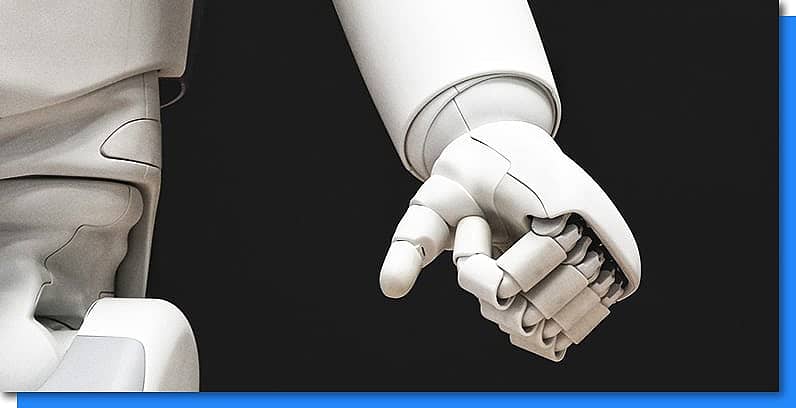
In fact, Robotics Business Review asserts that:
CNC manufacturing, in particular, is a process that is bringing greater accuracy to machining, as the entire process is run through the automation of cutting, grinding, and other tasks. CAD models are uploaded into the CNC system, which then determines the necessary processes to machine raw materials such as aluminum, ABS, and other plastics into finished parts.
Since the CNC system handles the decisions about how to machine raw materials into the desired finished product, the chance for error is reduced as all that is required to produce a part is a simple CAD drawing.
The evolution of advanced manufacturing continues with exciting news announcing the US Army and Lockheed Martin partner to develop rapid prototyping methods, “using bioproduction and self-assembly to create the building blocks of novel materials that have applications for defence optical technology and protective coatings.”
The US Army spent ten million dollars to fund the Self-Assembly of Nanostructures for Tunable Materials, designed to consider capabilities for integrating bioproduction of innovative materials for defense efforts.
Melissa Rhoads, a Lockheed Martin senior research manager and the project lead explained, “Cells efficiently create all sorts of materials, like a spider’s silk or a butterfly’s iridescent wings.”
We’ve already witnessed what additive and subtractive rapid prototyping can do for advanced manufacturing. This latest partnership will no doubt find new frontiers for product development yet to be imagined.
So, what is rapid prototyping? From our perspective, it’s the fastest way forward.
If you’re interested in adding rapid prototyping to your industrial manufacturing floor or innovation lab, start a conversation with us today.




